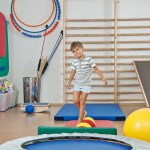Dyspraxia is a brain-based disorder that leads to difficulty in coordinating and planning physical movement. It is not a sign of low intelligence or muscle weakness. Children with this condition often struggle with posture and balance. They might appear to be ‘out of sync’ or clumsy with their environment.
Signs of Dyspraxia
Dyspraxia signs can be different from one person to another and can change as children get older.
Pre-School Children
If dyspraxia is not noticed, issues can continue and affect your child’s school life. It can result in lowered self-esteem and increased frustration. Children with this condition may show some of these types of behaviors:
- Extreme motor activity levels such as feet tapping and swinging while seated, twisting, unable to sit still and hand-clapping
- Extreme excitability levels with a shrill/loud voice
- Prone to temper tantrums and easily distressed
- Might continue to fall over or bump into things
- Flapping hands while running
- Creative play is limited
- Isolated or rejected from peer group; might prefer adult company
By 7 Years Old
Problems might include:
- Dressing slow. Not able to tie shoelaces
- Handwriting is barely legible
- Immature copying and drawing skills
- Poor listening skills and limited concentration
- Hard time becoming adapted to a school routine that is structured
- Hard time in Physical Education classes
By 8 to 9 years Old
Children with the dyspraxia disorder might become discontented with school. They often find difficulty with handwriting and have a poor attendance record by the time they are in secondary education.
You can have an easier time helping your child when you can recognize the signs of dyspraxia early on. If your child is diagnosed with dyspraxia, following expert tips and getting help from a pediatric occupational therapist can help build your child’s gross and fine motor skills. Your child will also need to be tested with the sensory integration and the Praxis test. With support and treatment, however, your child can improve their coordination and muscle tone over time.
